Upward Facing Dog Pose - Urdhva Mukha Svanasana
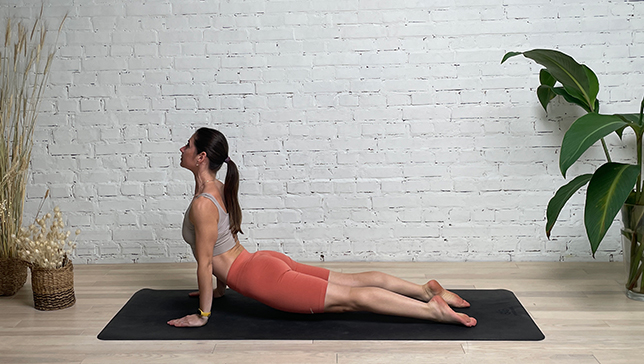
Contents
Upward Facing Dog Pose or Urdhva Mukha Svanasana in Sanskrit (‘urdhva’ = ‘ ‘upward’, ‘mukha’ = ‘face’ and ‘svan’ = ‘dog’ ‘asana’= ‘pose’).is a backbend pose that stretches the chest, shoulders, and spine, while also strengthening the arms, wrists, and back muscles.
Upward Facing Dog Pose pose is similar to Bhujangasana or the Cobra Pose, the only difference being, that in Cobra Pose the entire lower body touches the floor making a deep backbend and in Upward Facing Dog Pose the lower body from hips to ankles is just above the floor. Therefore, the strength of the arms and shoulders is really important in this position.
Upward-Facing Dog Pose is considered a base pose for upward-facing dog pose variations. Urdhva Mukha Svanasana helps boost energy in the body and hence can be included in different yoga sequences.
Pose Detail
- Body Position: Arm & Leg Support, Backbend Yoga Poses
- Difficulty: Beginners
- By Type: Chest Opening Yoga Poses, Flexibility Yoga Poses, Shoulder Opening Yoga Poses, Strengthening Yoga Poses
- By Benefit: Yoga Poses For Anxiety And Panic Attack, Yoga Poses For Digestion
Step-by-Step Instructions
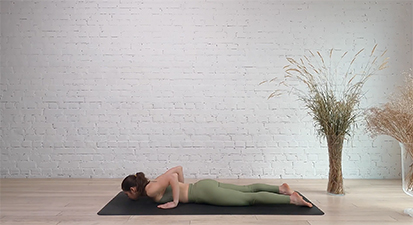
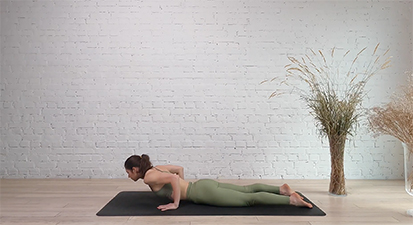

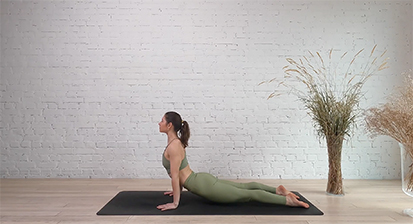
Benefits and Contraindications
Improves posture
Stimulates abdominal organs
Helps relieve mild depression, fatigue, and sciatica
Therapeutic for asthma
Firms the buttocks
Stretches chest and lungs, shoulders, and abdomen
Strengthens the spine, arms, wrists
Back injury
Carpal tunnel syndrome
Headache
Pregnancy
Photo poses in different angles
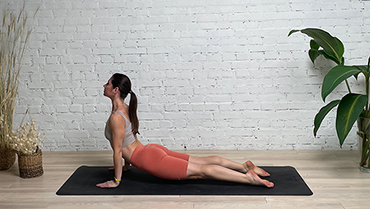
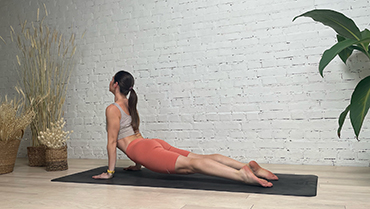
Modifications and Props For Beginners
- Blocks under hands: Placing yoga blocks under your hands can help make Upward Facing Dog Pose more accessible for beginners who may not have the strength or flexibility to fully lift their chest off the mat. Start by placing a block on either side of your mat at the highest height, then place your hands on the blocks as you lift your chest.
- Blanket under thighs: Placing a folded blanket under your thighs can help support your lower back and make Upward Facing Dog Pose more comfortable for beginners. Simply place the blanket under your thighs before you lift your chest off the mat.
Beginners' Tips
- Press up actively from the palms, drawing the shoulders away from the ears to keep yourself from hanging in the pose.
- Draw the chest forward through the arms, moving the shoulder blades towards the tailbone.
- Keep your legs active, ensuring that the knees stay off the ground.
- Start with Cobra pose and move into Upward Facing Dog once you’re ready.
- Look upwards only if you can do so while keeping length in your neck.
Frequently Asked Questions
While Upward Facing Dog is a common pose in many yoga classes, it is not necessarily a beginner-friendly pose. It requires a certain amount of strength in the arms, shoulders, and back to perform safely and effectively. It’s important to practice proper alignment and start with modifications or variations if needed.
Yes, Upward Facing Dog can help alleviate back pain by stretching and strengthening the muscles of the back, chest, and shoulders. However, if you have a serious back injury or condition, it’s important to check with your healthcare provider before attempting this pose.
Some common mistakes in Upward Facing Dog include collapsing the shoulders, allowing the elbows to splay out to the sides, overextending the neck, and compressing the lower back. It’s important to keep the shoulders rolled back and down, the elbows hugged in, and the neck long and relaxed.
If you’re not quite ready for the full expression of Upward Facing Dog, you can try modifications such as Cobra pose or Sphinx pose. You can also use props like blocks or blankets to support your hands and chest.
You should avoid Upward Facing Dog if you have a wrist injury, carpal tunnel syndrome, or any other condition that affects your ability to bear weight on your hands. It’s also not recommended if you have a serious back injury or condition that is aggravated by backbending.
Variations
- Upward Facing Dog Pose With Chair
- Upward Facing Dog Pose Leg To Side
- One Handed Upward Facing Dog Pose
- Upward Facing Dog Pose Blocks Under Hands Toes Tucked
- Upward Facing Dog Toes Tucked
- Upward Facing Dog Pose One Leg Sideways
- One Legged Upward Facing Dog Pose
- Upward Facing Dog Pose With Chair